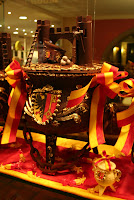Feb. 26, 1929-July 25, 2012
His name was synonymous with sports in Sterling. As a 1948 SHS grad, surely Sterling has never had a faster runner or a finer coach.
As an athlete, Dietz was a record-breaking runner on the track. Later as a teacher at SHS, he coached athletes to break records. Under his tutelage, the SHS track team won 26 conference titles. In addition to countless SHS Athletic Hall of Fame titles, he was also an Illinois State Track Coaches Inductee.
In high school, my dad, a defensive back playing for DeKalb, was assigned the task of guarding Sterling’s star running back.
“Our game plan was simple – tackle Dietz!” my dad recounted, “Only problem, we had to catch him first. We chased him up and down the field all night.”
My dad and Duwayne’s rivalry ended the day my dad started teaching at SHS in 1958. Every teacher who worked at SHS and every athlete who ever graduated from Sterling has his own favorite, “Dietzism,” engrained in his “thick skull.”
“For 25 years we shared the same office, so we told a lot of stories,” my dad said. “Duwayne became a colleague, a friend and a mentor.”
My dad learned the ropes of coaching freshman football as an assistant to Duwayne.
“At halftime of an away game we played so badly in the first half, Coach Dietz loaded the team back on the bus, and threatened to turn it around and drive them back home.”
When Duwayne retired in 1989 after 34 years serving students and athletes, my dad roasted him royally; SHS fittingly named the track after him.
Coach Dietz served his community and his country. As a paratrooper during the Korean War, he made 57 jumps and remained in the Army reserves for 30 years. A decorated colonel – strong, tough, feared and respected – he dressed sharp, stood straight and remained fit. He barked orders in a gruff voice. He was a man of few words, not all of them nice. But underneath the rugged façade was a loving father, caring coach, and strong leader. Everyone at SHS wanted to do right by him.
“Good run, Patty,” he said after my 880-yard dash. “What was your time?”
After he stopped me in the hall to inquire, I worked my butt off in track because I knew the next time he asked my time better be faster.
Everyone at SHS feared and admired Coach Dietz. But his bark was louder than his bite. Like all athletes, I’d jump at his command, then he’d soften the blow with his trademark grin, so that I knew he was kidding (or was he?)
Wrapped within the sadness of his death was also a sense of celebration for a man who shaped so many lives with his hard drive and high standards. Because Coach Dietz demanded excellence, I sought it in myself.
Dwayne Dietz was a Hall of Fame Athlete and Coach who raised a Hall of Fame Family.
He coached one son, an outstanding track star, as well as his son-in-law, a SHS standout football player. He taught with still another son-in-law. He left behind his lovely wife, Ruth, and 5 children and 14 grandchildren. Respected by the community, loved by friends and family, his passing leaves a hole in the hearts of many.
I feel fortunate to have grown up listening to the legends on the breezeway of their old house. His third daughter has been my best friend since third grade. As kids on the block, we all knew Mr. Dietz had our back.
With his parting, my hometown lost a hero. Another part of my childhood slipped away.
Rest in Peace Coach Dietz
Yockway Peggy









